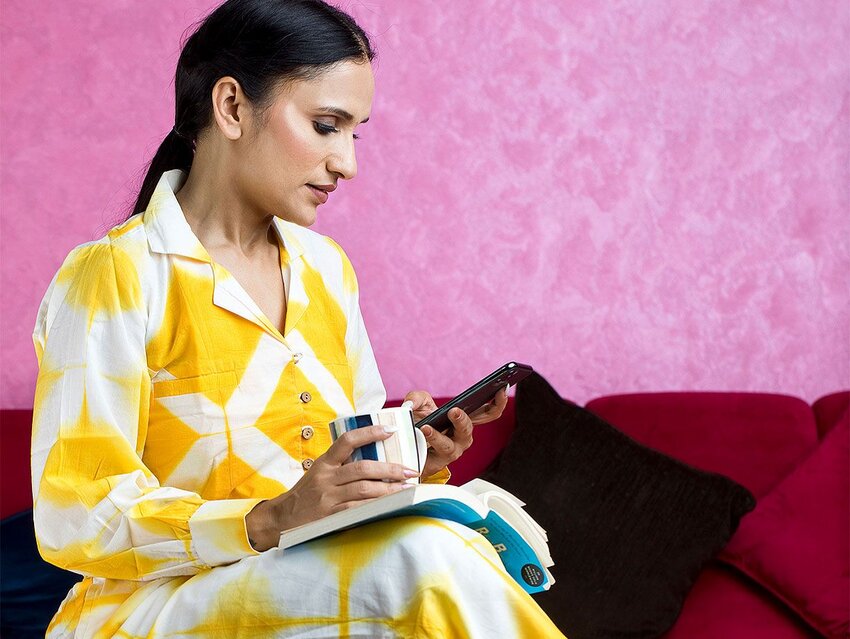Nowadays, “lady” or “ladies” is used to address a woman or a group of women, respectively, especially when referring to someone you might not know. For example, a parent might tell their child, “Say thank you to the nice lady,” or a server might greet a table with, “Good evening, ladies, how can I help you?” Often it’s used as an indicator of respect. Think of the standard (sometimes quaint) greeting of “ladies and gentlemen” at a live performance, which exalts and flatters the status of the audience. Other times, it can describe someone who is thought to embody a stereotypically feminine role: Someone who is “ladylike” is usually polite, dignified, well-mannered, and demure.
“Lady” also serves as a title for female nobility, but the etymological roots are in an activity far removed from the social stratosphere: breadmaking. The Old English (circa 1200) origin of “lady” — hlæfdige — combines hlaf, meaning “bread” or “loaf,” and dige, meaning “maid.” Dige is also linguistically close to dæge, which refers to a “maker of dough.” While it might not make sense on the surface, there’s actually a strong connection between the history of British nobility, social status, and bread.
A Nod to Nobility
In the U.K., the word “lady” takes on an aristocratic air. A lady (capitalized when it is used with a name, such as Lady Catherine de Bourgh in Pride and Prejudice) is a member of the nobility, either as a rank applied in her own right, or upon her marriage to a lord. Various ranks comprise what is considered nobility: duke, marquess, earl or count, viscount, and baron (the titles capitalized when paired with a name). These titles permit those who hold them to sit in the House of Lords, the British Parliament’s Upper Chamber; they are also exempt from jury service.
As its name suggests, the House of Lords doesn’t seem to take its women counterparts into consideration. In fact, it was only in 1949 that noblewomen — “ladies” — were legally permitted to sit in the chamber. And it wasn’t until 1958 that this right was fully realized in the Life Peerages Act. Hereditary nobility that was not endowed to women was replaced with individual lifetime status that could be bestowed upon anyone. Note that the chamber remains as the House of Lords; “ladies” still get no official mention.
These archaic gender divisions factor into the etymological roots of “lady.” The latter half of the Old English word from which it stems (dæge or dige) took on increased degrees of importance over time. With humble beginnings as a simple “kneader”of bread, the title was improved to “female servant” from the Old Norse deigja, before finally landing on “woman in charge of milking and making butter” in about 1200.
Status, Money and Bread
Debby Banham from the University of Cambridge, in discussing the relationship between gender, status, and food production in early medieval England, points out that the Old English word for “lord,” hlaford, translates to “guardian of the bread.” It delineated the patriarchal hierarchy of labor that revolved around the precious daily staple. The lord guarded; the lady kneaded.
The progression from “breadmaker” to “lady of status” likely begins with the assumption that only women with a high social and economic status would have had maids that they were in charge of.
On a Roll
It’s not entirely surprising that a word which denotes the role of women in society is linked to the kitchen and food. Lady Arundel was a member of 17th-century British nobility whose contribution to history reflects the correlation between the old and modern interpretations of “lady.” She is best known for the addition of her manchet (a type of dense, rich bread) to Elizabeth Grey’s 1653 cookbook. “Lady Arundel’s Manchet Buns” appeared in a 2018 episode of The Great British Bake Off when a baker used the recipe as inspiration for her own rolls. Lady Arundel’s ingredients feature dairy and eggs, unlike many other bread recipes — a hint, perhaps, to a more luxurious addition to an aristocratic noblewoman’s dining table.
Featured image credit: triloks/ iStock

